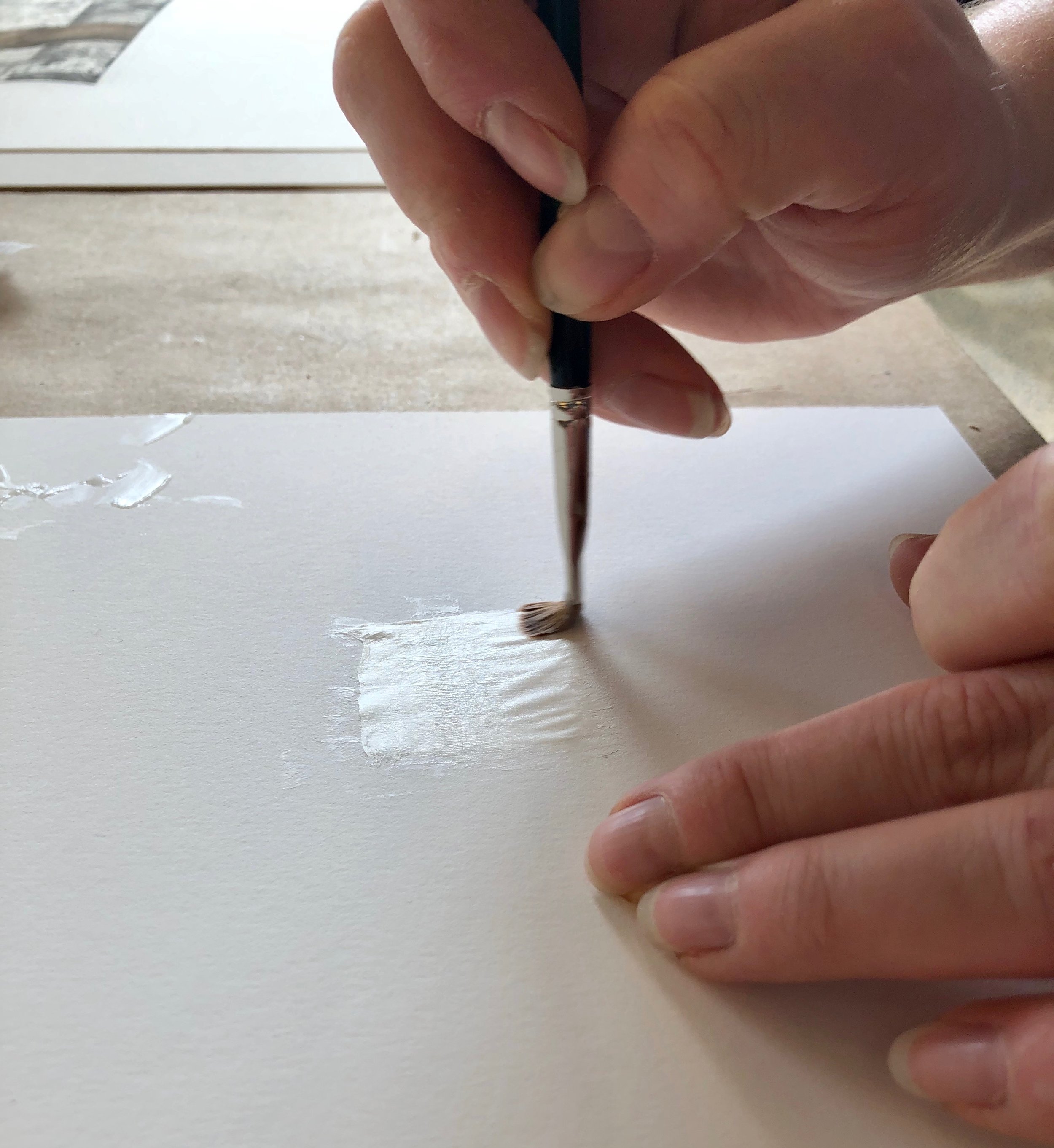Sometimes pieces arrive at The Center in good condition, but have framing treatments that need updating. We are frequently asked to reframe art, or to provide solutions to address faulty framing. For instance, one piece came to us in great condition, it had simply slipped from its mount inside its frame. The piece was a mixed media work by Mark Bradford, an installation and conceptual artist from Los Angeles who had first experimented artistically in his mother’s hair salon, and now has pieces in museums around the world.
Mark Bradford; image courtesy of the New Yorker.
Because of Bradford’s early exposure to a variety of media at his mother’s salon, such as foils, hair dyes, and other materials, it’s no surprise that many of his works employ a wide variety of media as well. Today, Bradford is perhaps best known for his monumental pieces, consisting mainly of different types of textured paper, that touch on contemporary issues that are important to the artist.
“Afro-Centric Black Folks — Crenshaw 29th” by Mark Bradford.
“Afro-Centric Black Folks — Crenshaw 29th” by Mark Bradford, verso.
This particular piece by Bradford, titled “Afro-Centric Black Folks – Crenshaw 29th,” is a small piece that arrived at The Center with failed hinges because the original hinging method and adhesive was insufficient for the weight of the art. When artwork is framed, it needs to be attached to a mount to support it within the framing package. Some framing facilities will hinge works on paper with tapes backed with pressure sensitive adhesives. These tapes can shrink and release over time, causing the art to drop off the mount board. At The Conservation Center, we create hinges using a combination of archival Kozo paper and archival reversible wheat starch paste, rather than tape.
The piece slipped from its mount inside the frame.
The original failed hinges of the piece.
What is a hinge?
A hinge is a thin, flexible piece of archival paper. At The Center, we typically use Kozo paper. Kozo paper is a strong, long fiber paper made by hand from the inner bark of the paper mulberry tree. This paper serves to secure artwork to a mount without damaging it. Kozo paper is produced in various weights, so a conservator can choose a thickness compatible with the weight of the piece to which it is adhered.
A strip of Kozo paper should be torn and not cut in order to create the feathered ends which help it adhere to the artwork.
What does a hinge do?
In preservation framing, we use minimal mounting methods like hinging so the art remains as close to its original state as possible. A hinge supports the art but allows it to break free if the framing package is dropped or the art shifts during transportation. The paper used for hinging is of a lighter weight than the artwork, so the hinge will tear rather than the art, protecting it from damage. However, the adhesive should be strong enough that it won’t detach from the mount board.
Kozo paper also comes in a variety of thicknesses.
What types of hinges are there?
T-Hinge
A T-hinge consists of two rectangular pieces of Kozo paper, with a larger rectangle overlapping the smaller one to create a T shape. This method is often utilized for artworks whose edges will be covered by a mat.
A T-Hinge.
The top part of a T-hinge remains visible until the window mat is added.
V-Hinge
A V-hinge consists of one rectangular piece of Kozo paper that is folded lengthwise. This method is used most commonly for artworks that appear to float inside a frame.
A V-Hinge.
Wheat starch paste.
A Custom Framer applies the wheat starch paste to the Kozo paper in preparation of a V-hinge.
Wheat starch past is applied directly onto the Kozo paper.
Hinging can be done in a variety of ways, each suited to the particular piece being framed. The original hinges of Mark Bradford’s work had failed, and since the medium is heavy weight paper, we wanted to support the hinge mechanically using a pull through method. The pull-through method requires slots to be carefully carved into the matboard to match up with the placement of the artwork so the hinge can then be pulled through and attached to the back of the board. Using the slot edge as a mechanical support in tandem with the wheat starch paste adhesive strengthens the mount.
New hinges allow the piece to appear to float in the frame.
Read more about hinging in some of our previous articles:
Robert Motherwell: Float Washing, Hinging, and New Housing
Cleanliness is Next to Godliness, Kerry James Marshall
Sources:
https://www.loc.gov/preservation/care/SmithBrown.PDF
http://www.artnet.com/artists/mark-bradford/biography
https://www.newyorker.com/magazine/2015/06/22/what-else-can-art-do















